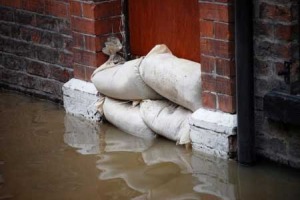
The images of last year’s flooding will never be forgotten.
Family properties, business units, farms, sports’ stadia and vehicles of all shapes and sizes were devastated by the swollen rivers and raging seas. According to the experts, the damage and subsequent cost of the clean up project was estimated at close to £1billion.
Were you hit by the flooding or do you know anyone who was?
If you were or if you currently reside in a susceptible area, would you be ready for another autumnal onslaught?
What would you do, if your local waterway threatened to burst its banks or the coastline near you was under siege from gale force winds?
The biggest concern, of course, is our own safety. However, our belongings and property are of significance too. It is always wise to put one or two plans in place – just in case. Also, check to make sure you have a number of safe storage areas, including a designated safe storage unit at your local self storage centre if necessary.
Here are 10 pointers to help you when it comes to flood preparation
Sand bags
It might be one of the older flood defence systems, but sand bags work and will certainly help you in the short term.
Protect your belongings
Remove pictures, mirrors, paintings and decorations from walls. Water in the house may cause the wallboards to soften.
Cabinet doors and curtains
After removing doors and drawers from lower cabinets and doorways, lift up your curtains and tie lower sections to upper sections.
Clothing and shoes
Remove clothing and shoes from closets and drawers. Try to get out at least enough for several wearings. Put anything that won’t float in large plastic bags and securely tape them up.
Raise furniture
You would be advised to raise furniture and appliances where possible and if time permits, remove carpets and rugs.
Prioritize your possessions
If you have no other means of protecting your possessions, prop or stack more valuable furniture and other items on less valuable pieces.
Outdoor possessions
Bring outdoor possessions inside the house or tie them down securely. This includes lawn furniture, lawn mowers and power tools, rubbish bins, tools and other moveable objects that might be swept away.
Vehicles
Drive or tow all vehicles and or trailers to higher, unaffected ground where possible.
Sewage outlet and utilities
If you have to leave your home block main sewage outlet from house to avoid sewage back-up and turn off the utilities. Shut off all gas and electric service before leaving your home.
Safe storage
If you live in an area that has or could be affected by flooding, why not consider a safe storage unit at your local self storage centre. You could inquire how much a safe storage unit would cost if you are hit by the storms. The unit could be used to store those valuable items that you don’t want to leave in the house and those items that cannot be taken upstairs.
Were you organised last year and in 2012 or were you caught in the eye of the storm – so to speak? If so let us know what you did or didn’t do and let us know what you might do differently if the inclement weather hits our shores once again.
If you want advice about self storage, get in touch or you can look up information about our locations on our website.
Image Copyright: ronfromyork / 123RF Stock Photo